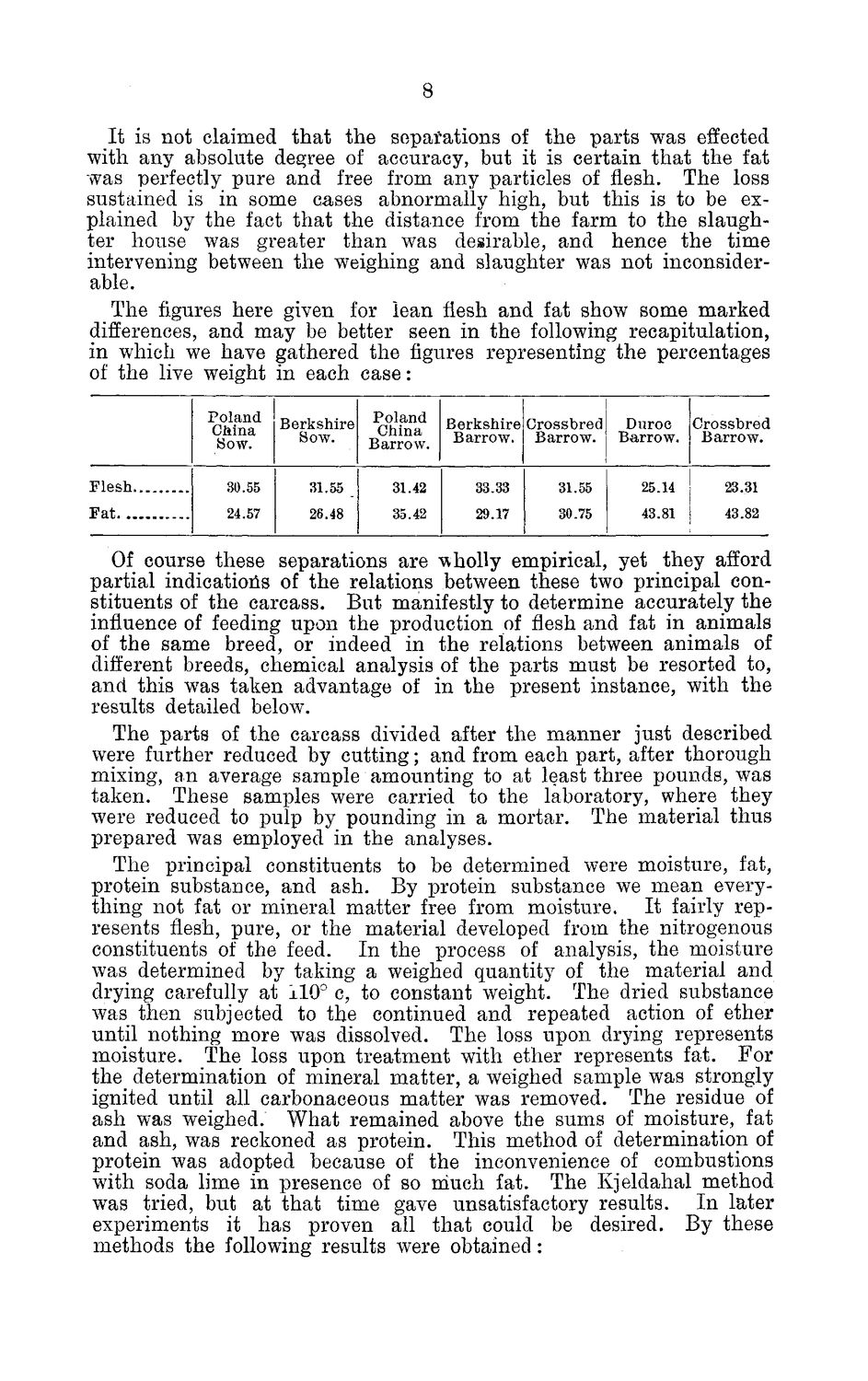| |
| |
Caption: Board of Trustees Minutes - 1884
This is a reduced-resolution page image for fast online browsing.

EXTRACTED TEXT FROM PAGE:
8 It is not claimed that the separations of the parts was effected with any absolute degree of accuracy, but it is certain that the fat was perfectly pure and free from any particles of flesh. The loss sustained is in some eases abnormally high, but this is to be explained by the fact that the distance from the farm to the slaughter house was greater than was desirable, and hence the time intervening between the weighing and slaughter was not inconsiderable. The figures here given for lean flesh and fat show some marked differences, and may be better seen in the following recapitulation, in which we have gathered the figures representing the percentages of the live weight in each case: Poland China Sow. Berkshire Sow. 31.55 26.48 Poland China Barrow. 31.42 35.42 Berkshire Crossbred Barrow. Barrow. 33.33 29.17 31.55 30.75 Crossbred Duroc Barrow. Barrow. 25.14 43.81 23.31 43.82 Flesh Fat 30.55 24.57 Of course these separations are wholly empirical, yet they afford partial indications of the relations between these two principal constituents of the carcass. But manifestly to determine accurately the influence of feeding upon the production of flesh and fat in animals of the same breed, or indeed in the relations between animals of different breeds, chemical analysis of the parts must be resorted to, and this was taken advantage of in the present instance, with the results detailed below. The parts of the carcass divided after the manner just described were further reduced by cutting; and from each part, after thorough mixing, an average sample amounting to at least three pounds, was taken. These samples were carried to the laboratory, where they were reduced to pulp by pounding in a mortar. The material thus prepared was employed in the analyses. The principal constituents to be determined were moisture, fat, protein substance, and ash. By protein substance we mean everything not fat or mineral matter free from moisture. It fairly represents flesh, pure, or the material developed from the nitrogenous constituents of the feed. In the process of analysis, the moisture was determined by taking a weighed quantity of the material and drying carefully at 110° c, to constant weight. The dried substance was then subjected to the continued and repeated action of ether until nothing more was dissolved. The loss upon drying represents moisture. The loss upon treatment with ether represents fat. For the determination of mineral matter, a weighed sample was strongly ignited until all carbonaceous matter was removed. The residue of ash was weighed. What remained above the sums of moisture, fat and ash, was reckoned as protein. This method of determination of protein was adopted because of the inconvenience of combustions with soda lime in presence of so much fat. The Kjeldahal method was tried, but at that time gave unsatisfactory results. In later experiments it has proven all that could be desired. By these methods the following results were obtained:
| |